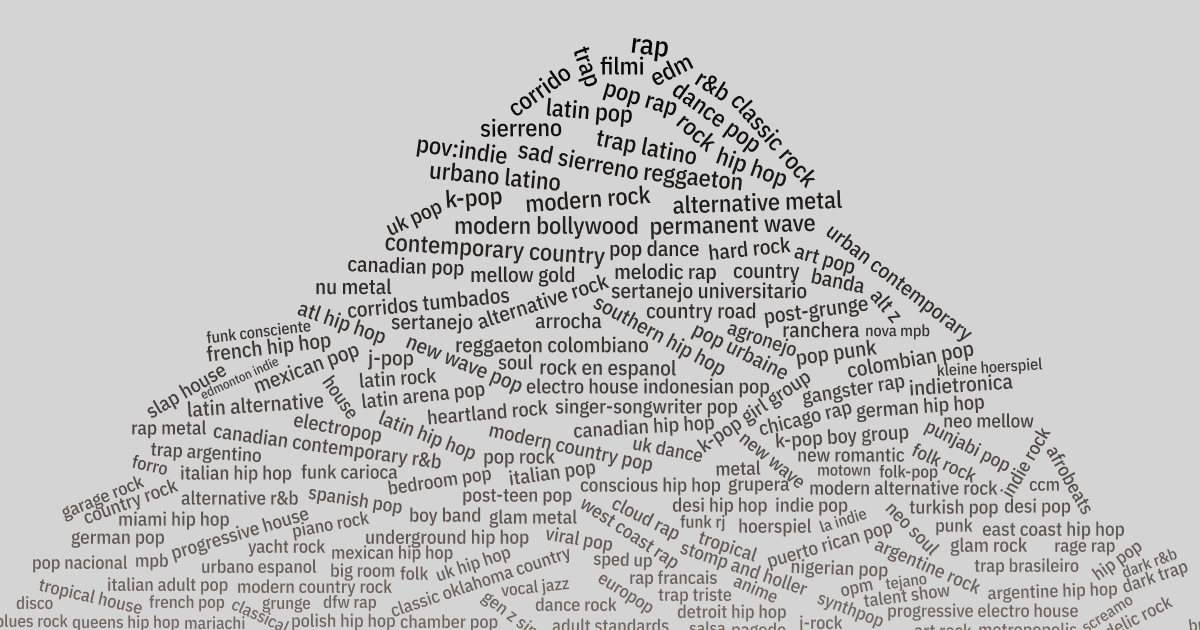The French Jesuit priest who surveyed Roman forts by air
I’m not sure what’s more fascinating: the scale of the Roman army’s building (in this case, in Syria) or the French Jesuit priest who surveyed them by aeroplane.
Either way, the history geek in me loves this.

Back in the early days of aerial archaeology, a French Jesuit priest named Antoine Poidebard flew a biplane over the northern Fertile Crescent to conduct one of the first aerial surveys. He documented 116 ancient Roman forts spanning what is now western Syria to northwestern Iraq and concluded that they were constructed to secure the borders of the Roman Empire in that region.Source: I spy with my Cold War satellite eye… nearly 400 Roman forts in the Middle East | Ars TechnicaNow, anthropologists from Dartmouth have analyzed declassified spy satellite imagery dating from the Cold War, identifying 396 Roman forts, according to a recent paper published in the journal Antiquity. And they have come to a different conclusion about the site distribution: the forts were constructed along trade routes to ensure the safe passage of people and goods.
[…]
The Dartmouth team analyzed CORONA and HEXAGON images covering some 300,000 square kilometers (115,831 square miles) in the northern Fertile Crescent, mapping 4,500 known archaeological sites and other features that seemed to be sites of interest. Some 10,000 previously undiscovered sites were added to their database. Poidebard’s forts have their own category in that database, based on their distinctive square shape and size, and the Dartmouth researchers found many more likely forts lurking in the spy satellite imagery.
The results confirmed Poidebard’s 1934 finding of a line of forts running along the strata Dioceltiana and also revealed several new forts along that route. But the survey also showed many new, previously undetected Roman forts running west-southwest between the Euphrates Valley and western Syria, as well as connecting the Tigris and Khabur rivers. That seems more suggestive of the forts supporting the movement of troops, supplies, or trade goods across the Fertile Crescent—cultural exchange sites rather than barriers. The authors date most of the forts to between the second and sixth centuries CE, after which there was widespread abandonment of the sites, although a few remained occupied into the medieval period.
Superorganisms and solidarity
I haven’t gone enough into Buddhism to understand whether what is described in this article by Richard D. Bartlett constitutes as secular version of it, but from my limited knowledge, it would appear so.
That’s not in any way to downplay the important insights that Rich brings to the fore in his writing. For example, asking the question about group dynamics when some or all of the group drinks strong coffee. Or wondering what the largest group is that can hold a single conversation.
Fascinating stuff, and firmly in the realm of philosophy of conviviality and solidarity. One to return to.
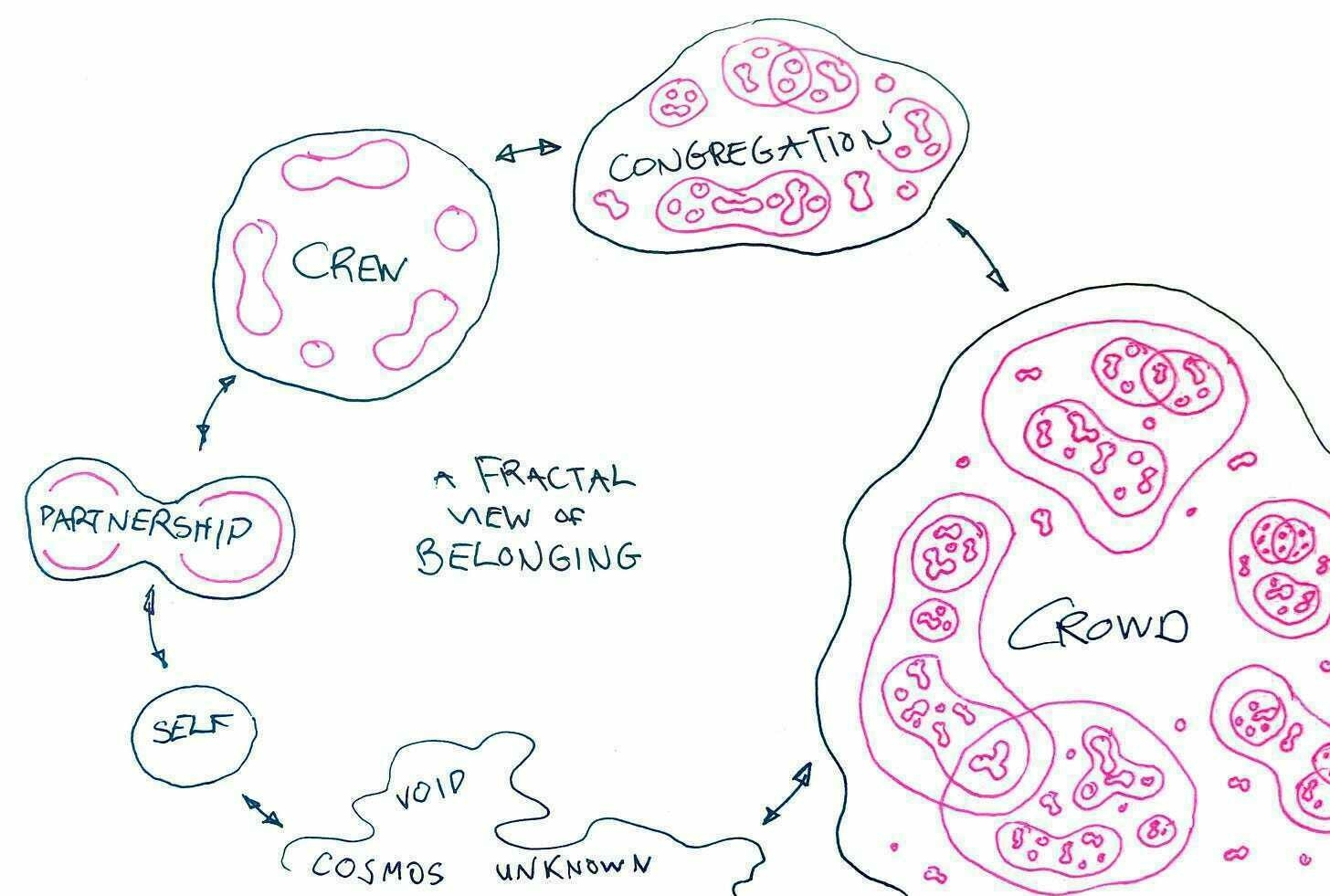
I want you to see your self as a superorganism. And I want you to see the superorganisms that you are part of. I want the perceived boundaries of your self to leak.Source: Seeing Like a Superorganism | Richard D. BartlettI want you to see how your agency is not a tidy black box contained inside the envelope of your skin, but distributed in a network, intra-penetrating with other people. I want you to feel the incorporeal beings steering your choices, and I want you to learn that you can steer their choices too.
[…]
Just as a we can see the distinct layers of “cell”, “tissue” and “organ” at the micro-scales, I want you to see the distinct layers at the macro-scale. I want you to see that a group of 5 people is a distinct superorganism with distinct competencies. A group of 150 people is another species of superorganism, it can do other things.
You may be thinking to yourself, what the fuck are you talking about Rich? I can’t explain it, you have to see for yourself. Maybe I can give you some instructions to help you see like a superorganism.
Serious art, influencers, and AI
This is quite the article by Rob Horning. It begins with a social media spat between an influencer and an art critic, takes a brief detour into the philosophy of modernism, and ends with a discussion of AI-produced representations of the world.
I think Horning could turn this into a short book, particularly if he considers studies which show that the historical value of artworks and the critical reception of artists' works tends to be as dependent on their ‘social networks’ and standing.

What, then, do “serious” critics expect “serious” art to do, given that it is not to make money or to provide emotional comfort or culinary enjoyment? One answer to that (and I’m deriving this from the Adorno-driven art criticism in J.M. Bernstein’s book 'Against Voluptuous Bodies') might be that art brackets off a space in which our ways of thinking and experiencing and representing the world can be tested for their continued coherence and validity. Art allows for epistemological problems to be articulated, if not solved.Source: Empire of the senseless | Internal exileAnother related answer is that art holds open a space between experience and how it is conceptualized, seeming to manifest the otherwise indescribable, ineffable aspects of experience — the stuff that resists discursivity — and assures us that such a realm (the realm of freedom, if you believe Kant) really exists. If something can be completely described, then it is subject to full, mechanized determination; it can’t be free. Proper artworks can’t be fully described or “put to use” — they can’t be exhausted by critical discourse or ordinary consumption — so they reveal freedom to us. A critic’s work, from that perspective, succeeds by failing — when its strenuously efforts to describe a piece serve to reveal its inexhaustibility, its ability to renew its meanings from some impenetrable, possibly noumenal source.
An artwork itself embodies the same paradox: It may most succeed when it “eludes and fails visual and perceptual claiming,” as Bernstein puts it in describing a piece by Jeanette Christensen. A work’s “own power of proliferating discourse” is what it both “wants and refuses” because its significance ultimately depends on manifesting and holding open the gap between what there is and what can be described (or mediated, or simulated, or reproduced, or predictively generated), the gap between words and things, between the meanings we project onto things and “things in themselves.” That is, art can make palpable what Bernstein calls an “aporia of the sensible,” which makes it a reflection our experience of the crisis of modernity: the rationalizing disenchantment of the world, the scientistic instrumentalist mode of grasping reality, the commodification of experience under the pressures of capitalism, the “all that is solid melts into air” condition.
Running slow and short
There are books that have changed my life, but there are also podcast episodes. One example of this is Episode #787 of the Art of Manliness podcast, entitled Run Like a Pro (Even If You’re Slow). In it, Brett McKay talks with Matt Fitzgerald, a sports writer, a running coach, and the co-author of the book with the same name as the podcast episode.
The gist of the episode is that even shorter, slower runs help build fitness. And, in fact, this is what elite-level runners do. So these days I deliberately go for runs where my heart rate stays well below 140bpm. The upside for me is that it increases my ability to do my longer runs, faster.
This article in The New York Times backs this up with research showing the physiological and psychological benefits of runs of any length. See also this recent interview with Matt Fitzgerald.

Numerous long-term studies — some involving thousands of participants — have shown that running benefits people physically and mentally. Research has also found that runners tend to live longer and have a lower risk for cardiovascular disease and cancer than nonrunners.Source: Short Distance Runs Have Major Health Benefits | The New York TimesOne might assume that in order to reap the biggest rewards, you need to regularly run long distances, but there’s strong evidence linking even very short, occasional runs to significant health benefits, particularly when it comes to longevity and mental well-being.
[…]
The physiological benefits of running may be attributable to a group of molecules known as exerkines, so named because several of the body’s organ systems release them in response to exercise. While research on exerkines is relatively new, studies have linked them to reductions in harmful inflammation, the generation of new blood vessels and the regeneration of cellular mitochondria, said Dr. Lisa Chow, a professor of medicine at the University of Minnesota who has published research on exerkines.
Image: Unsplash
Dynamic ontologies and music genres
As a music lover and someone who has more than a passing interest in dynamic ontologies, I found this analysis of Spotify’s changing categorisation of genres fascinating.
Spotify Unwrapped shows users their most-streamed artists, tracks, and genres at the end of the year. But what if you want to find out at another time? I just had a look at Chosic, which told me that my main ‘parent genres’ are Hip hop, Pop, and Electronic. My top sub-genres are trip hop, downtempo, and electronica.
All of the pushback against genre classifications are valid, whether that's inventing escape room and stomp & holler of what qualifies as r&b vs. pop.Source: You should look at this chart about music genres | pudding.coolBut I still think an always-updating catalog of 6,000 genres is groundbreaking.
I see this effort in the same way I see taxonomy: technically accurate, colloquially useless.
For centuries we had generic names to identify animals, such as “fish.” Everything from squid to crabs (and obviously jellyfish) were lumped into the same “fish” bucket.
But on closer inspection, most of these animals were not related at all. In a research context, scientists have draw boundaries between animals that we mindlessly lumped together.
Similarly, the genre database adds much needed detail to broad categories, like hip hop and rock. For musicologists, it’s an anthropological gold mine. And for Spotify, it likely helps them to better profile their users' music tastes.
But these genres don’t necessarily work in casual conversation: you can describe your music taste as indie, even if, technically, Spotify says it’s escape room. The same goes for biology: people should call figs a fruit, even though it’s technically an inverted flower.
The social semi-permeable membrane
I never used LiveJournal, but I love Ben Werdmuller’s description of it as a place to journal in private with your friends. Although that’s not exactly what Substack provides, the interaction between the longer-form and the shorter form (through Substack Notes) is getting there.
It’s not as if it would be ideal to just have a place for existing friends, as you need new people and ideas to mix things up a bit. So it’s that semi-permeable membrane that makes things interesting: not quite fully public, but not quite fully private.
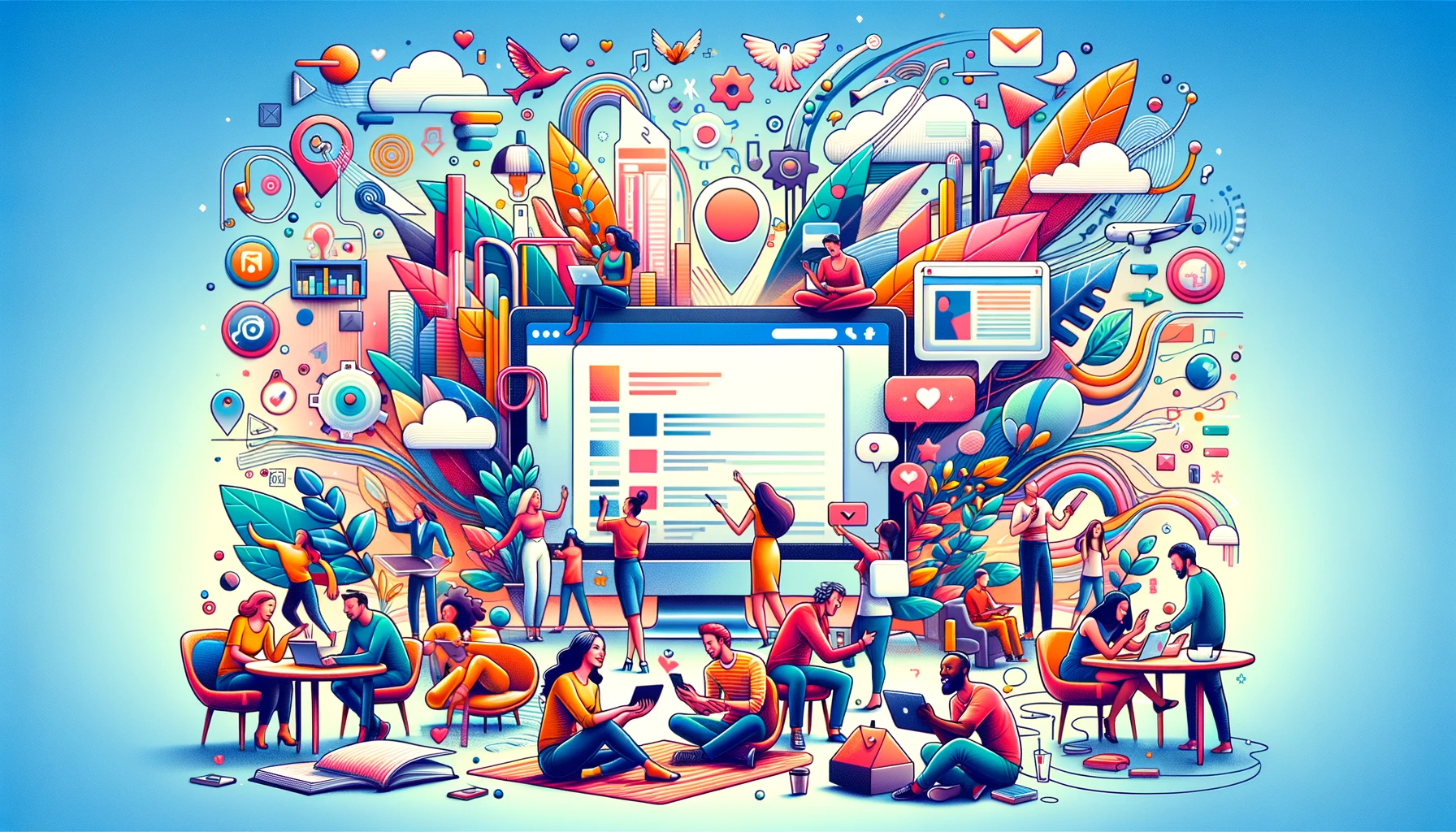
If you missed its heyday about twenty years ago, LiveJournal was a private blogging community that led to much of what we know as social media. You could follow your friends, and they could follow you back if they wanted; your posts could be shared with the whole world, just with your friends, or with a subset. Every post could host thriving, threaded discussions. You could theme your journal extensively, making it your own. And while you could post photos and other media, it was unapologetically optimized for long-form text. The fact that the whole codebase was also open sourced, paving the way for Dreamwidth and other downstream communities, didn’t hurt at all. Brad Fitzpatrick, its founder, went on to build a stunning number of important web building blocks.Source: Journaling in private with my friends | Ben Werdmuller[…]
Public social networks force us to use a different facet of our identities. In a private space with your friends, nobody really cares about your job, and nobody’s hustling to promote whatever it is they’re working on. Twitter nudged social networking into becoming a space for marketing and brands, which is a ball the new Twitter-a-likes have picked up and carried. Much like the characters from The Breakfast Club, each of the new Twitters has its own stereotypical niche: the nerds, the brands, the rich people, the journalists. But they all feel a little bit like people are trying to sell ideas to you all of the time.
Systems and interconnected disaster risks
When you see that humans have exceeded six of the nine boundaries which keep Earth habitable, it’s more than a bit worrying. But then when you follow it up with this United Nations report, it makes you want to do something about it.
I guess this is one of the reasons that I’m interested in Systems Thinking as an approach to helping us get out of this mess. I can imagine pivoting to work on this kind of thing, because (as far as I can see) everyone seems to think it’s someone else’s problem to solve.

Systems are all around us and closely connected to us. Water systems, food systems, transport systems, information systems, ecosystems and others: our world is made up of systems where the individual parts interact with one another. Over time, human activities have made these systems increasingly complex, be it through global supply chains, communication networks, international trade and more. As these interconnections get stronger, they offer opportunities for global cooperation and support, but also expose us to greater risks and unpleasant surprises, particularly when our own actions threaten to damage a system.Source: 2023 Executive Summary - Interconnected Disaster Risks | United Nations University - Institute for Environment and Human Security (UNU-EHS)[…]
The six risk tipping points analysed in this report offer some key examples of the numerous risk tipping points we are approaching. If we look at the world as a whole, there are many more systems at risk that require our attention. Each system acts as a string in a safety net, keeping us from harm and supporting our societies. As the next system tips, another string is cut, increasing the overall pressure on the remaining systems to hold us up. Therefore, any attempt to reduce risk in these systems needs to acknowledge and understand these underlying interconnectivities. Actions that affect one system will likely have consequences on another, so we must avoid working in silos and instead look at the world as one connected system.
Luckily, we have a unique advantage of being able to see the danger ahead of us by recognizing the risk tipping points we are approaching. This provides us with the opportunity to make informed decisions and take decisive actions to avert the worst of these impacts, and perhaps even forge a new path towards a bright, sustainable and equitable future. By anticipating risk tipping points where the system will cease to function as expected, we can adjust the way the system functions accordingly or modify our expectations of what the system can deliver. In each case, however, avoiding the risk tipping point will require more than a single solution. We will need to integrate actions across sectors in unprecedented ways in order to address the complex set of root causes and drivers of risk and promote changes in established mindsets.
Image: DALL-E 3
System innovation is driven by reshaping relationships within the system
As I may have mentioned a little too often recently, I’m about to start an MSc in Systems Thinking. So I’m always on the lookout for useful resources relating to the topic.
I came across this one by Jennie Winhall and Charles Leadbeater from last year, which discusses how system innovation is driven by reshaping relationships within the system. It identifies four keys to system innovation: purpose, power, relationships, and resource flows. The focus is on relationships, which are the patterns of interactions between parts of a system. Transforming a system requires altering these relationships, which in turn unlocks other keys like purpose and power.
(Over a decade ago, I lined up to talk with Leadbeater after his talk at Online Educa Berlin. I was going to ask him something specific about his most recent book, but as everyone before him gushed over it, I think I just mumbled something about not liking it and then sloped off. Not my finest moment. Apologies, Charles, if by some reason you’re reading this!)
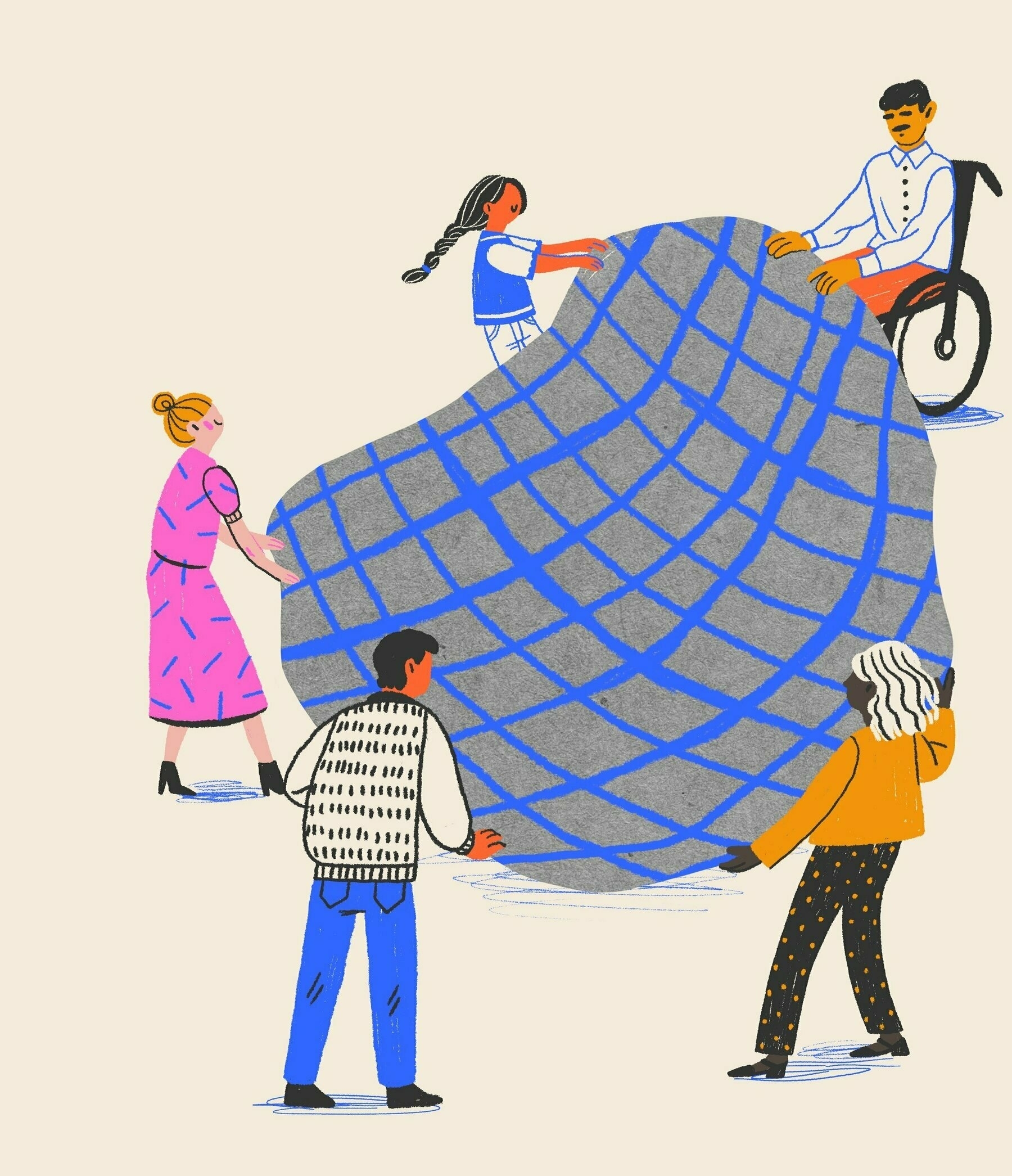
Systems are defined by the patterns of interactions between their parts: their relationships. Those interactions generate the outcomes of the system as a whole. Transforming the outcomes of a system requires remaking its relationships and then unlocking the other keys to system innovation: purpose, power and resources. This shift in relationships allows all those in the system to learn faster, to be more creative. System innovators redesign the relationships in the system to allow dramatically enhanced learning across the system, and thereby generate far better outcomes.Source: The Patterns of Possibility | The System Innovation Initiative
Tech typologisation
People love being typologised. I’m no different, although my result as an ‘Abstract Explorer’ in IBM’s Tech Type quiz wasn’t exactly a surprise.
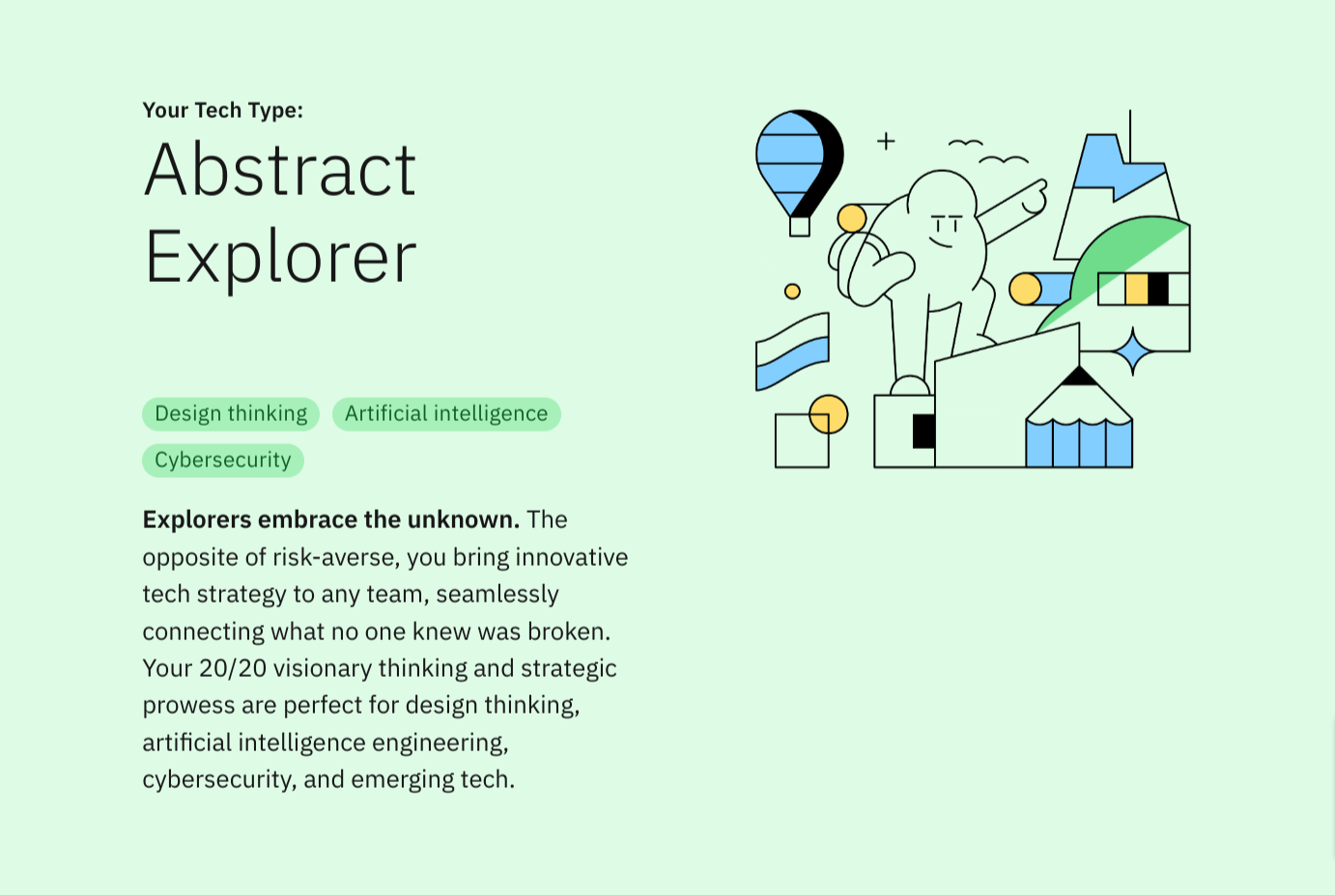
Source: Tech Type Quiz | IBM SkillsBuildConsider this: a quiz to guide you to your unique fit for tech skills based on your strengths and interests. Find your future with this personalized assessment, bringing you one step closer to new skills to enhance your career in tech and key skills like artificial intelligence (AI). And it takes less than 5 minutes.
Is this the end of the 'extremely online' era?
As I mentioned in a recent post, you can’t win a war against system designed to destroy your attention. You have to try a different strategy. One of those is disengaging, which is what Thomas J Bevan is noticing, and advocating for, in this post.
I like his mention of going to a place where he noticed there was “something off” and he realised nobody was using their phone. Not because they weren’t allowed to, but because they were having too much of a good time to bother with them.
<img class=“alignnone size-full wp-image-8855” src=“https://thoughtshrapnel.com/wp-content/uploads/2023/10/DALL·E-2023-10-26-21.10.14-Vector-art-showing-a-massive-pile-of-smartphones-stacked-high-with-a-single-small-flower-growing-from-the-top-symbolising-hope-and-a-return-to-auth-1.png” alt=“Vector art showing a massive pile of smartphones stacked high, with a single, small flower growing from the top, symbolising hope and a return to authenticity.
" width=“1024” height=“1024” />
The consequences of life lived online have bled through into the real world and this has happened because we have allowed them to. It’s a cliché to say that real life is now a temporary reprieve from the online, as opposed to the other way around. We pay the price for all of this via boarded up shops, closing pubs, empty playgrounds and silent streets as each individual stays at home each night, enchanted by the blue flicker of their own little screen feeding them their own walled in world of news and content and edutainment.Source: The End of the Extremely Online Era | Thomas J BevanI believe it will end, this so-called way of life. Not through the Silicon Valley oligarchs spontaneously developing a conscience or being legislated into acting with a modicum less sociopathy. I don’t believe people will be frightened into changing how they act or suddenly shamed into putting their phones down for once in their lives. Such interventions don’t work with most addicts and more and more people are legitimately hooked on their devices than we are currently willing to countenance. No, I think this will all end, as T.S Eliot said, with a whimper. People will simply lose interest and walk away. Because the internet now is boring. People spend all day scrolling because they are trying to find what isn’t there anymore. The authenticity, the genuinely human moments, the fun.
Image: Created with DALL-E 3
Treating depression with hot yoga
Although I don’t think he went for the reasons given in this article, my late, great friend Dai Barnes used to love hot yoga. In fact, living as a teacher on-site at a boarding school, he’d travel miles to go to his nearest venue.
This Harvard Gazette article suggests that hot yoga might help with depression. I can definitely understand that: I’ve just re-added the spa to my leisure centre membership, and even just going in the sauna at this time of year feels incredible.

In a randomized controlled clinical trial of adults with moderate-to-severe depression, those who participated in heated yoga sessions experienced significantly greater reductions in depressive symptoms compared with a control group.Source: Heated yoga may reduce depression in adults | Harvard Gazette[…]
In the eight-week trial, 80 participants were randomized into two groups: one that received 90-minute sessions of Bikram yoga practiced in a 105°F room and a second group that was placed on a waitlist (waitlist participants completed the yoga intervention after their waitlist period). A total of 33 participants in the yoga group and 32 in the waitlist group were included in the analysis.
[…]
After eight weeks, yoga participants had a significantly greater reduction in depressive symptoms than waitlisted participants, as assessed through what’s known as the clinician-rated Inventory of Depressive Symptomatology (IDS-CR) scale.
Why haven't you bought a Steam Deck yet?
I love my Steam Deck, and am so pleased that I not only bought it, but I bought the maxed-out version, despite the cost. This post goes into reasons why it’s so good.
Among other things, the author, Jonas Hietala, touches on the Steam library, sleep mode, and the fact that it’s an open platform. I think my favourite thing is its flexibility. It can even be used as a Linux desktop machine!
As I’ve said in other posts, I feel sorry for non-gamers. I get plenty of stuff done in my life, including parenting, and I’m a gamer. You’re missing out.
In the beginning of the year I gave myself a late Christmas gift and bought a Steam Deck for myself. There were two main reasons I decided to buy it:Source: The killer features of the Steam Deck | Jonas HietalaAnd boy did it deliver. The Deck is probably the most impressive thing I can remember buying since… I don’t know, maybe my first smartphone?
- I wanted my kids to play games instead of passively consuming endless amounts of YouTube.
- I wanted to combat my burnout and depression by picking up gaming again.
Zoom backgrounds with a Japanese nature retreat vibe
Not only did I love Swarnali Mukherjee’s writing in this post, I also absolutely adored the image that went with it. You may have noticed that I created something similar-looking with DALL-E 3 to illustrate one of yesterday's posts.
As we're moving house at the moment, and my home office is full of boxes, I'm using my Elgato green screen. While the view from the Death Star is great, I wanted something a bit more (literally) down-to-earth.

I created these images for my own use, and the one above is my favourite. Click for the full-sized versions and use them however you wish.






The casual ableism of futurism
This article by Janet Gunter discusses the endemic ableism she’s discovered due to her new and invisible disability (Long Covid). As a technologist and anthropologist, she notes that even progressive futurist notions such as solarpunk are problematic for people like her who rely on complex supply chains.
We need to do better to understand that a future that doesn’t work for us all is, as Janet points out, exclusionary and essentially a form of fascism.
<img class=“alignnone size-full wp-image-8827” src=“https://thoughtshrapnel.com/wp-content/uploads/2023/10/DALL·E-2023-10-24-20.15.19-Photo-of-a-circular-wooden-cabin-in-a-serene-forest-setting.-Inside-a-person-who-appears-tired-and-fatigued-is-resting-on-a-tatami-mat-taking-a-mome-1.png” alt=“DALL-E: Photo of a circular wooden cabin in a serene forest setting. Inside, a person who appears tired and fatigued is resting on a tatami mat, taking a moment to rejuvenate. The cabin’s large round windows offer panoramic views of the dense trees and distant mountains, while the interior showcases Japanese minimalism with sliding paper doors and a central meditation space.
" width=“1024” height=“1024” />
Scanning back to scifi of my childhood, the only disabled character in Starwars was Darth Vader. And Vader is a perfect posterboy for the usual scifi treatment of disability – a canvas for creepy transhumanist visions of “fixing” the disabled and the hiding of disability. (It turns out, now, there are rare good depictions of the disabled in scifi, but you have to know where to look!)Source: Crip futurism | Janet GunterOthers have observed that ignoring or devaluing the concerns of the most vulnerable — or suggesting that they get fixed or deleted from a future green society — is tantamount to ecofascism.
[…]
What the ableist world needs now is acceptance of cataclysmic change and all of the grief that comes with that. Acceptance that our Cartesian minds will destroy us, that we need to learn to listen to our bodies and to the biosphere. Acceptance that the pace of our lives must change.
Personally, I desperately need visions of the future where I can be an active, valued participant, no matter my physical or cognitive state. I need everybody involved in envisioning and testing new ways of living within our planetary boundaries to consider and include people like me at the outset, not as an after-thought.
Image: generated with DALL-E 3
Philosophy and friendship
Laura Kennedy writes about loneliness in a post that documents her experiences moving from Ireland to London, and then on to Australia. What I’m interested in, though, is the turn of phrase when she states: “A philosopher quite literally wouldn’t know a friend for sure if they were standing in front of us recreating the love declaration scene from Love Actually.”
I’ve always been a bit hesitant about calling someone a ‘friend’ although I’m getting better at it in my middle-age. I think this is perhaps, as I’ve mentioned before, I’ve perhaps had too high a bar in mind. Nothing I experience is likely to hit the heights of Montaigne’s relationship with Étienne de La Boétie, for example.
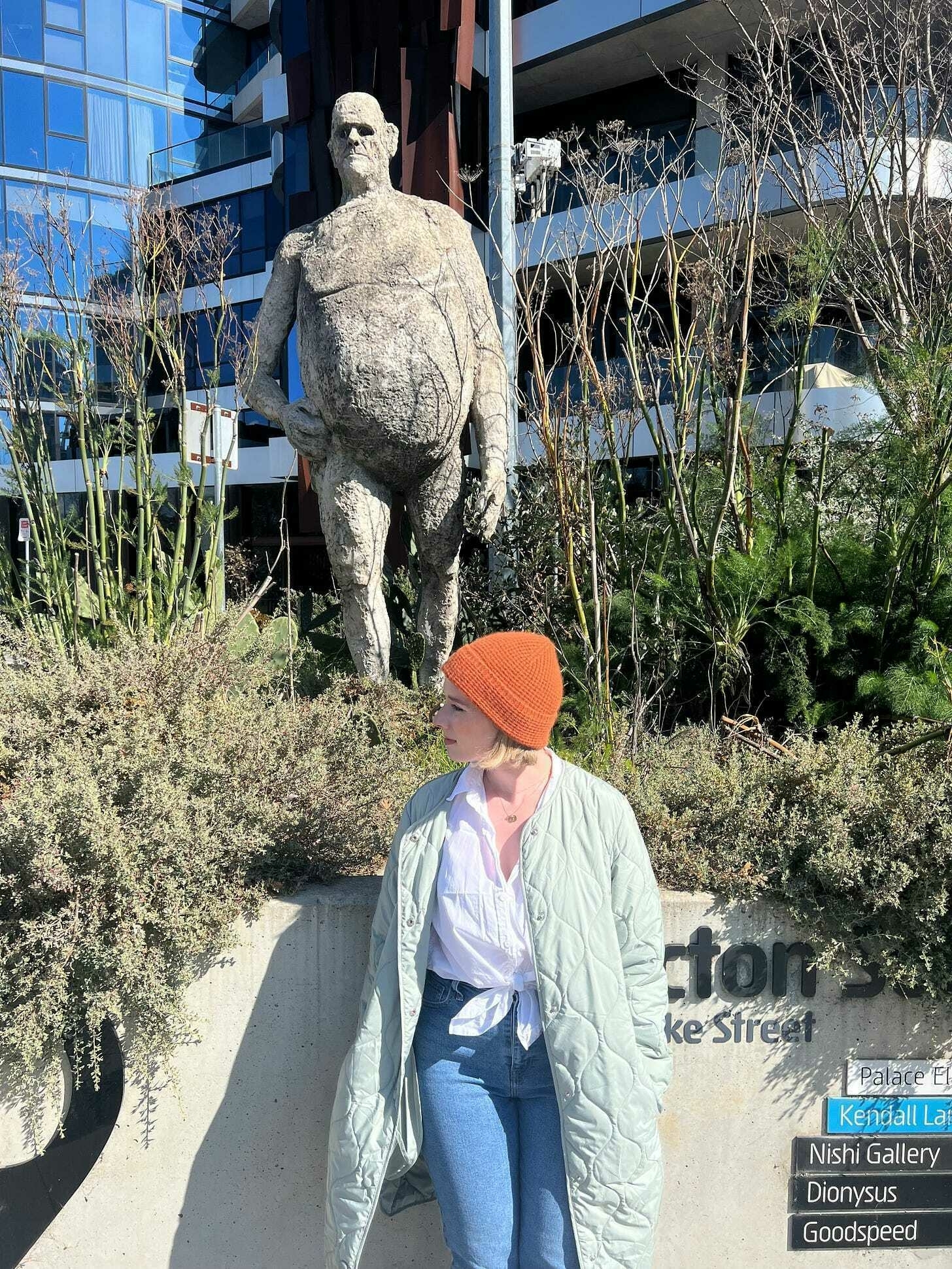
In 2018, after first moving to London and a few months into my new life, I was struggling to figure out how I fit into it. I wrote an article in The Irish Times about not having many friends and not being sure what to do about it, or whether it even constituted a problem. Come to think of it, I wasn’t entirely sure what constituted a ‘friend’ at all. I’m still unsure. Yes – I know. This, again, is why everyone hates philosophers. These sorts of questions are appealing only to a very narrow pool of potential future friends. A philosopher quite literally wouldn’t know a friend for sure if they were standing in front of us recreating the love declaration scene from Love Actually. I’ve taken creative licence there. Nobody has ever declared undying forbidden romantic love for a philosopher. Conceivably Spinoza, but apart from him (and perhaps Kierkegaard and de Beauvoir. Frantz Fanon. Max Stirner maybe? It’s the glasses), there really isn’t a looker in the bunch.Source: On Loneliness | Peak Notions
Laying to rest a foundational myth
The widely accepted “Man the Hunter” theory proposes that during human evolution, men evolved to hunt while women focused on gathering and domestic duties such as child-rearing. However, as reported in Scientific American, it turns out that recent research is challenging this view.
Scientific studies indicate that women are physiologically better suited for endurance tasks, which is crucial for hunting. Also, although ignored for societal reasons (read: the patriarchy) archaeological records and ethnographic studies demonstrate that women have a longstanding history of participating in hunting activities.
I’m pleased that our 12 year-old daughter inhabits a world where female footballers are allowed to compete in the same way as men in most areas of life. There is still a lot of inequality, but it helps when we dismantle these foundational myths.

Mounting evidence from exercise science indicates that women are physiologically better suited than men to endurance efforts such as running marathons. This advantage bears on questions about hunting because a prominent hypothesis contends that early humans are thought to have pursued prey on foot over long distances until the animals were exhausted. Furthermore, the fossil and archaeological records, as well as ethnographic studies of modern-day hunter-gatherers, indicate that women have a long history of hunting game. We still have much to learn about female athletic performance and the lives of prehistoric women. Nevertheless, the data we do have signal that it is time to bury Man the Hunter for good.Source: The Theory That Men Evolved to Hunt and Women Evolved to Gather Is Wrong | Scientific American[…]
So much about female exercise physiology and the lives of prehistoric women remains to be discovered. But the idea that in the past men were hunters and women were not is absolutely unsupported by the limited evidence we have. Female physiology is optimized for exactly the kinds of endurance activities involved in procuring game animals for food. And ancient women and men appear to have engaged in the same foraging activities rather than upholding a sex-based division of labor. It was the arrival some 10,000 years ago of agriculture, with its intensive investment in land, population growth and resultant clumped resources, that led to rigid gendered roles and economic inequality.
Now when you think of “cave people,” we hope, you will imagine a mixed-sex group of hunters encircling an errant reindeer or knapping stone tools together rather than a heavy-browed man with a club over one shoulder and a trailing bride. Hunting may have been remade as a masculine activity in recent times, but for most of human history, it belonged to everyone.
What, after all, is 'redemption'?
This article by Hanif Abdurraqib in The Paris Review draws analogies between one of my favourite games, Red Dead Redemption 2, and his own life. It’s probably worth pointing out that the article contains spoilers for the single-player version of the game.
What I appreciated about Abdurraqib’s writing is that he doesn’t use the world ‘escapism’ to describe gaming. Instead, he discusses notions of heaven and hell, of what ‘redemption’ might actually mean, and explores the complexities of life.
For me, I play games which, like Red Dead Redemption 2, allow me to play morally-questionable characters. It’s a form of release, for sure, but it’s also an opportunity to explore a side of oneself perhaps impossible to do so given current real-world constraints.
It’s for this reason that I feel sorry for non-gamers. Where do they get this kind of experience?
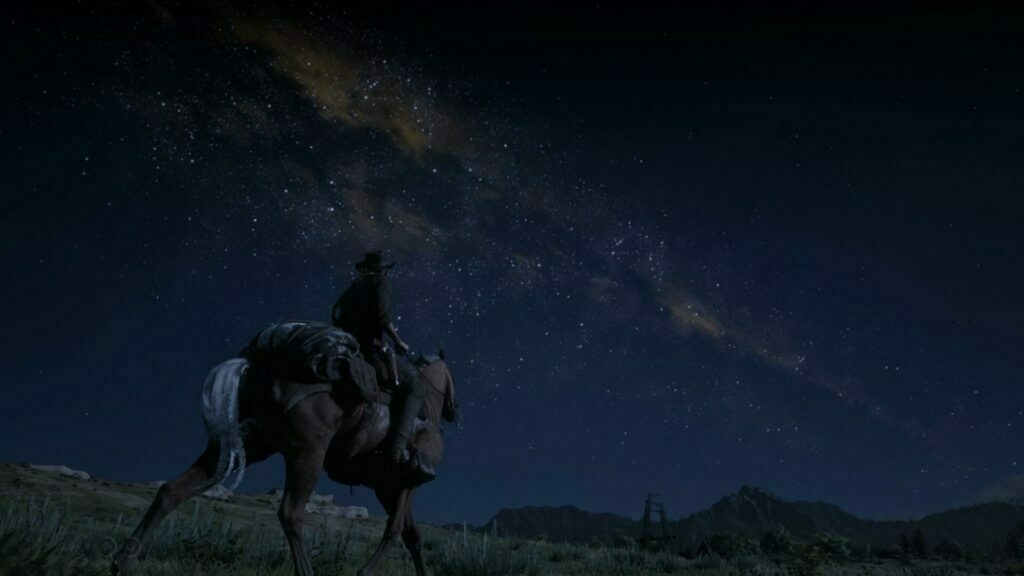
A therapist asked me once if I thought of myself as redeemable, and I’m almost certain I laughed it off, or detoured toward another answer that sounded satisfying but actually said nothing. I believe in redemption in the same way that I believe in heaven: I feel required to. Not only because of my personal politics, but also because of my social interests, and my investment in others beyond myself, and also—yes—because I do imagine that somewhere along the uneven path of my life, I’ve tried to be better more often than I have been worse. I suppose I’m cynical about all of it, though. The world, as it stands, is obsessed with punishment, particularly for the most marginalized. Punishment for living in the margins, or an intersection of the margins. I don’t know if my personal beliefs in redemption can undo that massive ghost, hovering over so many of our lives, baked into our impulses, even when we know better. Even when we, ourselves, have been on the losing end of that impulse.Source: We’re More Ghosts Than People | The Paris ReviewIt is easy to attempt to redeem Arthur in a world that isn’t real. To play a mission where Arthur kills, rides away over a trail of dead bodies, and then goes and helps the camp with chores. Picks some flowers along a hillside. Helps a family build a house. In a world where no one is reminding you of the wreckage you’ve taken part in, it’s easy to compartmentalize your damage and chase after that which is strictly beautiful, or cleansing. Climbing your way toward the upper room by any means necessary, on the wings of anyone who will have you.
The inner world as the ultimate prison
I wanted to quote so much of this article that it would have ended up being a Borges-like 1:1 map of the territory. Instead, I’ll simply share the part of Swarnali Mukherjee’s writing which resonated most with me.
Do go and read the whole thing.
(I discovered this via Substack Notes, in which I have no financial interest, but simply finding to be a chill and serendipitious alternative to other social media)

The problem is simple: most of us have normalized and even glorified the hustle for success. The issue lies not in the hustle itself but in the often overlooked aspect of burning out. When success is defined in terms of societal parameters such as wealth, fame, and the emphasis on building an identity, life's entire focus becomes sustaining and amplifying this ego at the cost of our well-being, both psychologically and physically. We reinvent spaces in our intellectual worlds to serve this gigantic ego that we have conjured over the years but seldom find true happiness there. Our inner world becomes our ultimate prison, from whose window our persistent illusion of success resembles fireworks, promising that we can achieve them as long as we stay in the prison. This is a subtle deception of our social constructs; we humans have meticulously constructed these labyrinths of illusions to shield ourselves from the truth that even if we are in service to our desires, they are influenced by external factors. In that manner, doing something because the world expects it, that you won’t be doing otherwise is also a form of imprisonment.Source: The Art of Disappearing | Berkana
Monetising a hobby is different to solving a difficult problem for people ready to pay
Life is never as simple as a 2x2 matrix, but they’re incredibly useful for helping illustrate a key message. In this post, Seth Godin uses one to make the obvious-if-you-think-about-it point that trying to monetise a hobby is a different thing to solving a difficult problem for a group of people who are willing to pay for a solution.
I’ve been thinking about this kind of thing a lot recently given the ongoing need for WAO business development. The advice, which I’m sure is extremely sound, is to find a group of people or type of organisation that you “wish to serve” and then find out as much about them as possible so you can solve their problem.
The trouble is that… doesn’t sound very interesting? Perhaps I’m wrong, and I reserve the right (as ever!) to change my mind, but I’d rather follow my interests and try and find aligned people and organisations willing to pay for the outputs.
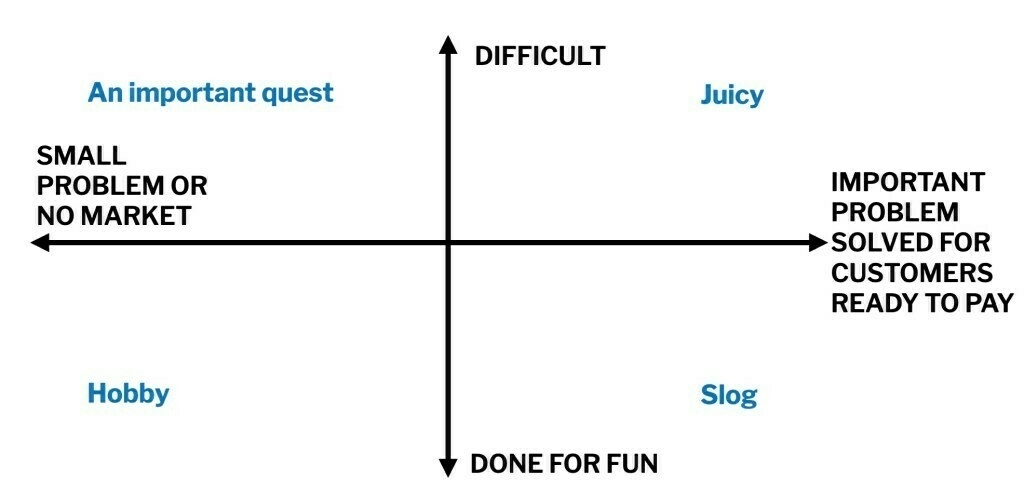
All too common are ‘fun’ businesses where someone finds a hobby they like and tries to turn it into a gig. While the work may be fun, the uphill grind of this sort of project is exhausting. If it’s something that lots of people can do and that customers don’t value that much, it might not be worth your time. Taking pictures, singing songs or playing the flute are fine hobbies, but hard to turn into paying jobs.Source: The slog, the hobby and the quest | Seth’s BlogOn the other hand, in the top right quadrant, there’s endless opportunity and plenty of work for people who can do difficult (unpopular) work that is highly valued by customers who are ready to pay to solve their problems. A forensic accountant gets more paid gigs than a bagpipe player.
Content-neutral sentence starters and phrases for academic writing
As part of preparing for my upcoming MSc I’ve been working through a course about preparing for postgraduate study. One of the links from that course was to the Academic Phrasebank from the University of Manchester, which I thought was useful.
The Phrasebank, which is also available in PDF and Kindle formats, takes the form of sentence starters for when you want to do things such as explain causality or signal transition. Really useful.
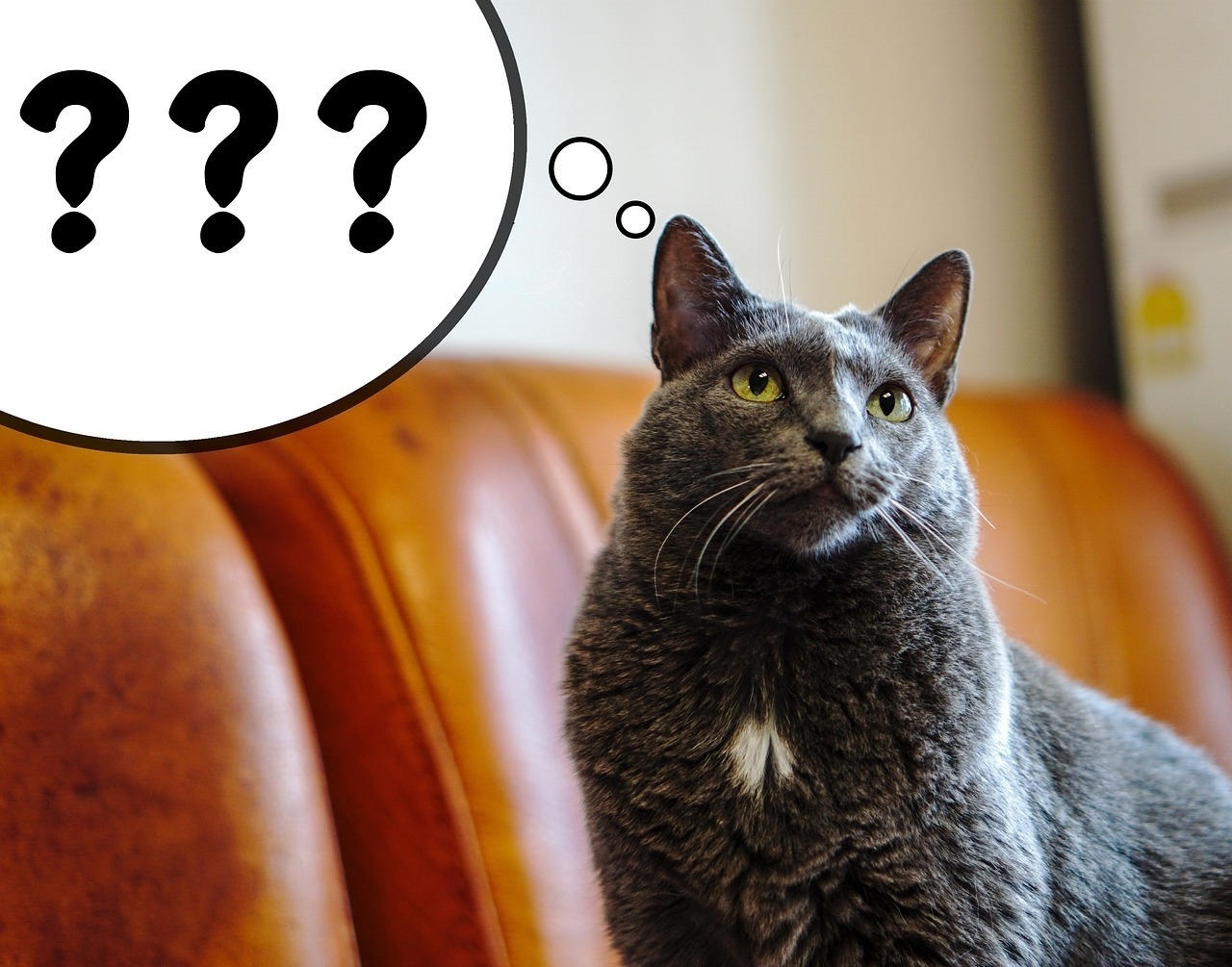
The Academic Phrasebank is a general resource for academic writers. It aims to provide you with examples of some of the phraseological ‘nuts and bolts’ of writing organised according to the main sections of a research paper or dissertation (see the top menu ). Other phrases are listed under the more general communicative functions of academic writing (see the menu on the left). The resource should be particularly useful for writers who need to report their research work. The phrases, and the headings under which they are listed, can be used simply to assist you in thinking about the content and organisation of your own writing, or the phrases can be incorporated into your writing where this is appropriate. In most cases, a certain amount of creativity and adaptation will be necessary when a phrase is used. The items in the Academic Phrasebank are mostly content neutral and generic in nature; in using them, therefore, you are not stealing other people’s ideas and this does not constitute plagiarism. For some of the entries, specific content words have been included for illustrative purposes, and these should be substituted when the phrases are used. The resource was designed primarily for academic and scientific writers who are non-native speakers of English. However, native speaker writers may still find much of the material helpful. In fact, recent data suggest that the majority of users are native speakers of English.Source: Academic Phrasebank | The University of Manchester
Image: Pixabay
